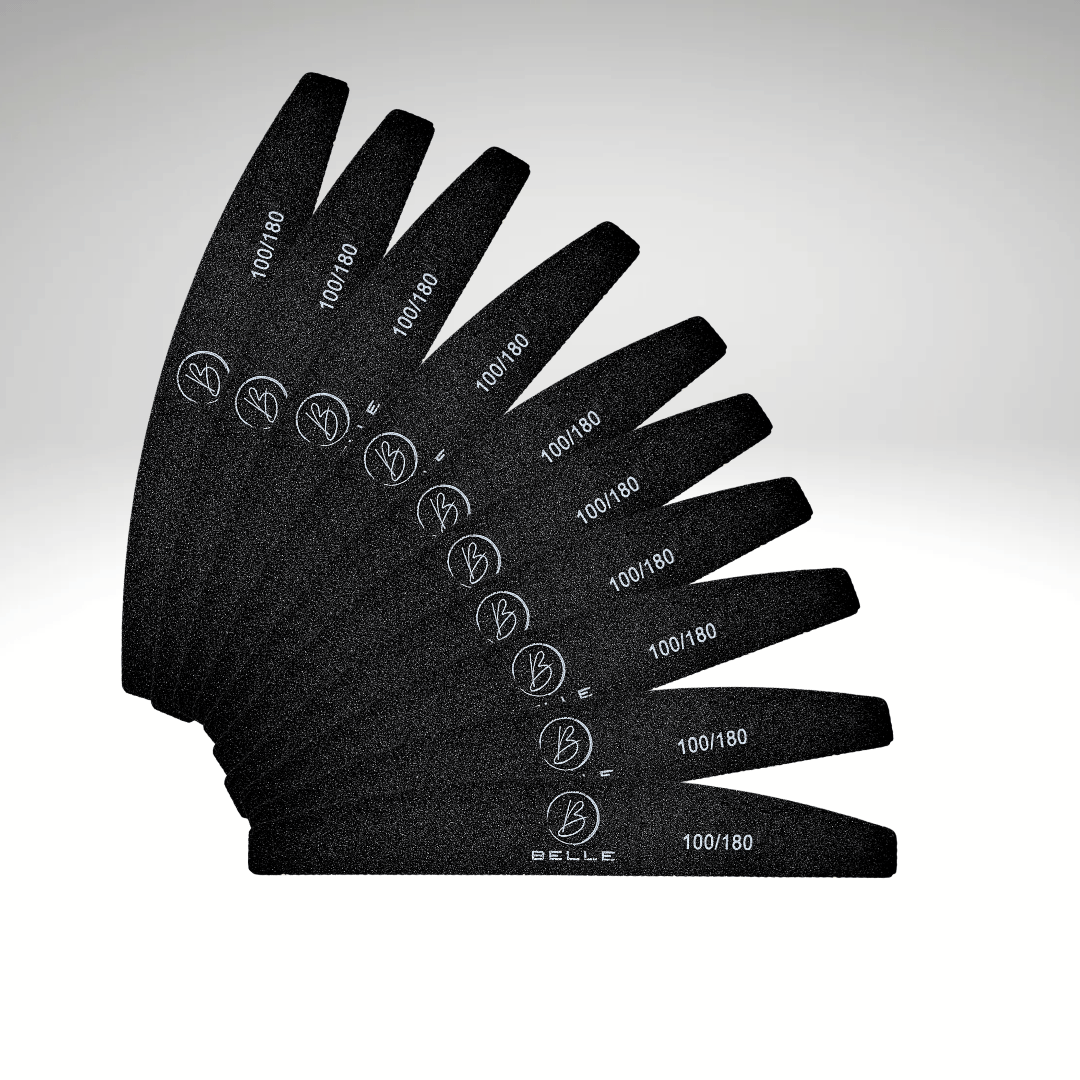Understanding Nail Anatomy: A Guide for Nail Technicians
Understanding the intricacies of nail anatomy is crucial for nail technicians. It's the foundation of professional nail care, enhancing the quality of services offered to clients.
This guide aims to provide a comprehensive overview of nail anatomy. From the nail plate to the lunula, each component plays a vital role in nail health and appearance.
Whether you're an experienced technician or a beauty school student, this guide will deepen your knowledge. Let's delve into the fascinating world of nail anatomy and its significance in professional nail care.
The Importance of Nail Anatomy for Nail Technicians

Nail anatomy is more than just understanding the parts of the nail. It's about knowing how these parts function and interact. This knowledge is key to delivering high-quality nail care services.
A thorough understanding of nail anatomy allows technicians to diagnose nail conditions accurately. It helps differentiate between cosmetic issues and potential health concerns. This is crucial in deciding when to refer clients to medical professionals.
Knowledge of nail anatomy also enhances the application of nail art and design. It aids in selecting the right tools and techniques for each client. This customisation improves client satisfaction and loyalty.
Moreover, understanding nail anatomy is essential for safe and effective manicure techniques. It helps prevent damage to the nail and surrounding skin. It also aids in the early detection of serious conditions like nail melanoma.
Lastly, staying informed about the latest research in nail health and anatomy is an ethical responsibility. It ensures that technicians provide the best possible care to their clients.
Key Structures of the Nail
The nail is a complex structure made up of several key parts. Each part plays a unique role in nail health and function. Understanding these structures is fundamental for professional nail care.
The main structures of the nail include:
- The Nail Plate- The Nail Bed
- The Cuticle and Nail Folds
- The Nail Matrix and Lunula
The Nail Plate
The nail plate is the hard, translucent part of the nail. It's what we often refer to as the nail itself. Made of keratin, a type of protein, the nail plate protects the sensitive nail bed underneath.
The nail plate's strength and resilience come from keratin. This protein also gives the nail its semi-transparent appearance.
The Nail Bed
The nail bed is the skin beneath the nail plate. It's rich in blood vessels and nerves. This part of the nail provides nutrients to the nail plate, promoting healthy growth.
The nail bed also plays a crucial role in nail sensitivity. It helps us sense touch and pressure, enhancing our tactile abilities.
The Cuticle and Nail Folds
The cuticle is the tissue that overlaps the nail plate at the base of the nail. It acts as a protective barrier, preventing bacteria and fungi from entering the nail matrix.
Nail folds are the skin grooves that surround the three sides of the nail plate. They help anchor the nail plate to the finger, providing stability.
The Nail Matrix and Lunula
The nail matrix is the tissue under the nail. It's responsible for producing cells that become the nail plate. Damage to the nail matrix can affect nail growth and appearance.
The lunula is the visible part of the nail matrix. Often seen as a white crescent at the base of the nail, the lunula plays a key role in nail growth and shape.
Nail Growth and Health Indicators
Nail growth patterns and rates can vary greatly among individuals. On average, human nails grow about 3 millimeters per month. Understanding these patterns is crucial for effective nail care.
Factors such as age, health, and diet can influence nail growth. For instance, nails tend to grow faster in younger individuals and during pregnancy. On the other hand, certain health conditions and poor nutrition can slow down nail growth.
Nail health can also be an indicator of overall health. Healthy nails are usually smooth and consistent in colour. Changes in nail colour, texture, or growth rate may signal underlying health issues.
For example, yellow nails can indicate a fungal infection. Meanwhile, white spots or lines can be a sign of injury to the nail. In some cases, they may also suggest a more serious health problem.
Nail technicians should be familiar with these signs. Early detection can lead to timely treatment and better outcomes for clients. It's important to note, however, that nail technicians are not doctors. They should always refer clients to medical professionals for diagnosis and treatment of potential health issues.
Understanding nail health indicators is a key part of professional nail care. It allows nail technicians to provide better services and advice to their clients.
Common Nail Disorders and Diseases
Nail disorders are common and can affect people of all ages. One of the most common is fungal infections. These can cause the nail to become discoloured, thickened, and brittle.
Another common disorder is ingrown nails. This happens when the nail grows into the skin, causing pain and inflammation. It's often caused by improper nail trimming or wearing tight shoes.
Nail psoriasis is another condition that nail technicians may encounter. It can cause pitting, ridges, and abnormal nail growth. It's important for nail technicians to recognize these signs and refer clients to a dermatologist for treatment.
Understanding these common nail disorders and diseases can help nail technicians provide better care for their clients. It can also help them educate their clients about these conditions and how to prevent them.
Professional Nail Care and Manicure Techniques
Professional nail care goes beyond just making nails look good. It's about maintaining the health and integrity of the nails. This requires a thorough understanding of nail anatomy and proper manicure techniques.
One key aspect is the safe trimming and shaping of nails. This should be done in a way that doesn't damage the nail plate or cuticle. It's also important to avoid over-filing, which can thin the nail and make it prone to breakage.
Another important aspect is the application of nail enhancements. Whether it's acrylics or gels, these should be applied in a way that doesn't damage the nail bed or matrix.
Lastly, nail technicians should educate their clients on proper home care. This includes using moisturisers to keep nails hydrated and avoiding harsh chemicals that can damage the nails.
The Role of Keratin and Nail Strength
Keratin, a type of protein, is a crucial component of nails. It's what gives nails their strength and resilience. A healthy nail is rich in keratin, making it hard and resistant to damage.
However, factors like poor diet, stress, and exposure to harsh chemicals can deplete keratin levels. This can lead to weak, brittle nails. Nail technicians should therefore advise clients on ways to boost keratin production, such as maintaining a balanced diet and avoiding harsh nail products.
Cuticle Care and Maintenance
The cuticle plays a vital role in nail health, acting as a protective barrier against bacteria and fungi. It's essential to keep the cuticle well-moisturised to prevent it from drying out and cracking, which can lead to infections.
Nail technicians should educate clients on the importance of regular cuticle care. This includes using cuticle oil daily and avoiding cutting the cuticle during manicures, as this can cause damage and increase the risk of infection.
Nutrition, Lifestyle, and Nail Health
A balanced diet rich in vitamins and minerals is crucial for optimal nail health. Consuming foods high in biotin, such as eggs and almonds, can help strengthen nails. Similarly, adequate hydration is key to maintaining healthy nails.
Lifestyle factors also impact nail health. For instance, stress can slow nail growth, while certain medications may affect nail appearance. Nail technicians should consider these factors when providing nail care services and offer appropriate advice to clients.
The Significance of Continuing Education in Nail Anatomy
Continuing education in nail anatomy is vital for nail technicians. It keeps them updated on the latest research and techniques, enhancing their skills and service quality.
Moreover, it can expand career opportunities. A deep understanding of nail anatomy can lead to specialisation, such as in nail health consultation or product development.
Conclusion: Enhancing Nail Services with Anatomy Knowledge
Understanding nail anatomy is a game-changer for nail technicians. It allows them to provide superior, personalised services that cater to each client's unique needs.
Moreover, it empowers them to educate clients on nail health, fostering trust and loyalty. Truly, nail anatomy knowledge is a cornerstone of professional nail care.









